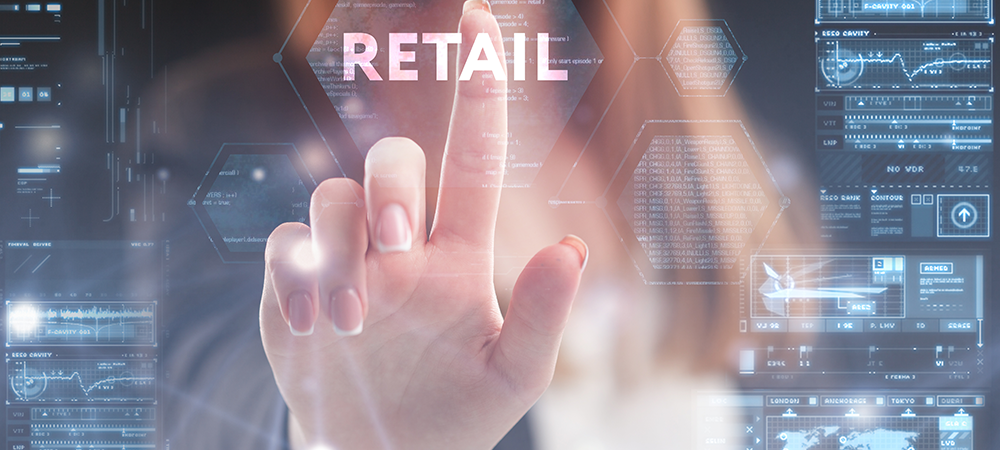Despite the retail sector realising the potential of IoT devices, Mark Thomson, Director of Retail and Hospitality EMEA, at Zebra Technologies, believes opportunities are being lost to maximise their effectiveness in the face of increased competition.
You would be hard pressed to find a retailer who doesn’t want greater insight into what is happening within its stores and warehouses – and why it’s happening. Perhaps that’s why Zebra’s 2019 Intelligent Enterprise Index revealed a record number of retailers accelerating their efforts to become ‘intelligent.’
According to the annual study, the global retail sector’s ‘intelligence score’ increased 6.7% points from 2018 to 2019 to reach 62.1. That’s only one point lower than the highest-scoring healthcare sector. It also represents the largest year-over-year gain among all sectors.
Why intelligence scores matter more than ever
Retailers are now highly focused on ‘returns.’ They want to know how they keep customers returning to their stores amidst fierce competition and how to minimise product returns. They also want to understand how best to maximise their return on investment (ROI) for any new resources dedicated to accomplishing such goals. Sometimes, that entails augmenting or expanding the workforce. In other cases, it requires process re-engineering or workflow automation. But it always involves technology in some capacity.
Given that two of the key technology platforms used to derive and deliver IoT-powered intelligence at the edge of the enterprise have already been deployed in most retail environments today, it’s no surprise that retailers see potential, and a potentially strong return, with IoT-based solutions.
Barcode-based systems and mobile devices are highly versatile and could quickly be configured to work within more advanced IoT-based architectures. Almost immediately, handheld mobile computers, smartphones, tablets and scanners could deliver expanded intelligence to front-line-store associates to improve point-of-sale (POS), restocking, physical inventory counts and inventory lookup, among many other actions that help to improve the speed and quality of customer service and secure sales.
These same devices can be utilised to simultaneously improve back-of-house logistics: shipping, receiving, inventory management, buy-online-pick-up-in-store (BOPIS) fulfillment and more.
They could also be combined with other technologies such as prescriptive analytics engines, sensors, RFID locationing systems and near-field communications (NFC) technologies to offer near-perfect clarity into retailers’ operations and produce the small, actionable data that makes a big impact on the bottom line.
Yet, retailers aren’t investing as heavily in IoT solutions as one might think based on this year’s study findings. Despite the aggressive year-over-year growth in their ‘intelligence’ score, retailers’ average spend on IoT is the lowest among all surveyed sectors.
I suspect this is because retailers have spent the last few years thoroughly evaluating the many different IoT strategy and solution options available and are just now starting to move into the execution phase. (Only 58% of retailers actually have a well-defined IoT vision and are executing on this plan right now.)
Others (41%) have yet to scale their IoT solutions company-wide. They’re likely testing different models in select stores in order to optimise mobile device configurations, refine workflow applications, shore up security and solicit both worker and customer feedback on the impact of such technologies on in-store shopping experiences.
Spending should increase as pilot programmes conclude and retailers become more confident in their strategy and ability to bring comprehensive IoT systems to scale.
The real ROI of ‘intelligence’ is measured by action
For the last few years, the primary goal for retailers has been to gain greater visibility into their operations. The ability to fully sense and analyse what customers and associates are doing within a store or warehouse can be invaluable. Definitive data about what is or isn’t happening informs inventory management strategies, decisions about the digitalisation of customer experiences and more.
Yet, the real power of IoT – the real return – comes when those lessons are turned into measurable action.
Today, only 55% of retailers share information from their IoT solutions with employees in real time or near-real time. And only 38% share the actionable intelligence with all of their employees. That’s a missed opportunity.
If you know what issues are plaguing your store or warehouse, and you even have a firm grasp on why those issues are occurring, then why wouldn’t you prescribe a specific action to a worker to resolve them immediately and mitigate recurrences?
Why wouldn’t you articulate the ‘best next steps’ to take with their current mobile and barcode-based systems already in place in order to maintain pricing accuracy and stocked shelves? Why not give associates tools they need to more quickly locate items for customers or expedite checkout to avoid losing sales? And why not deploy a team immediately to investigate suspected theft or fraud and adjust asset protection processes?
Retailers who utilise the IoT-powered technologies at their disposal right now to both capture intelligence at the edge and take direct action on it are the ones who will most successfully capture their edge as both customer demands and competitive pressures intensify.
For more information, check out Zebra’s 2019 Intelligent Enterprise Index.
Click below to share this article

